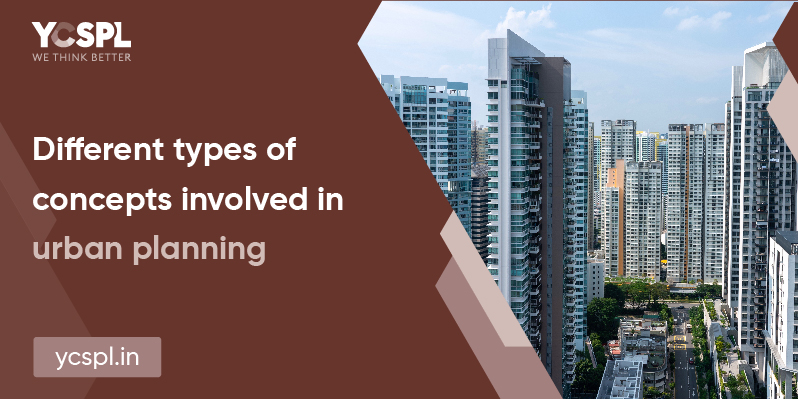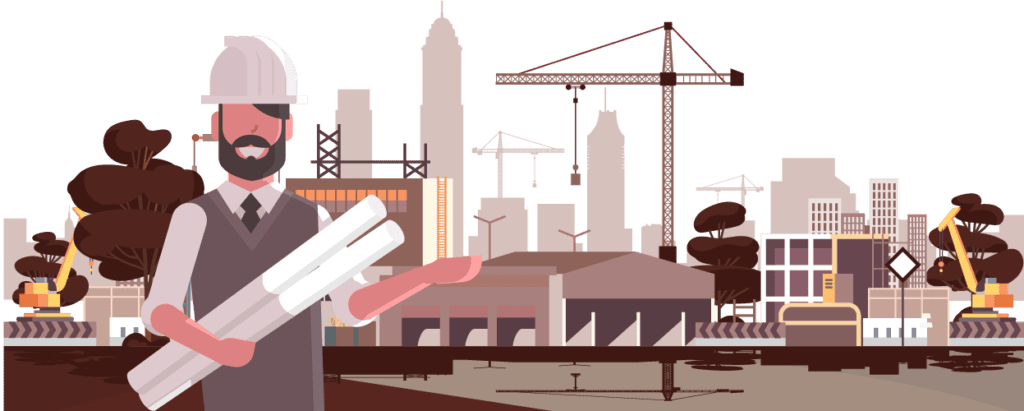
The major scope of urban planning is to breathe life into cities and enrich the well-being of the citizen. The core focus here is to develop sustainable communities with ample opportunities. There are different types of urban planning concept and the major idea of all these revolves around developing cities for the future.
Urban planning designs and concept ideas should revolve around promoting city-life features like easy access, enhanced engagement avenues, and living a busy life while also having areas for refreshments. Everything from economic growth, effective utilization of public spaces, construction designs, infrastructure developments, social functions, availability of resources, etc should all be taken into consideration.
But firstly, it is important to understand that all these elements co-relate with each other and should be considered to go hand-in-hand. Only this way, we’d have the chance of building cities that are comprehensively sufficient to meet the growing needs of the citizens. If you’re looking at the concepts, you should also be curious about what is urban planning. Because creating a community might be one effort but restoring an existing one also involves its own nitty-gritty that needs to be addressed.
Any planning can only meet the desired outcomes if they have any set high-level objectives from the start. A strategic planning process involves the consideration of elements that will enhance the quality of life altogether. This should focus on enticing people from even other regions to migrate to live the city life that the urban area offers.
Features like transit facilities within the city, creating more open spaces, developing communal spaces, etc. The other components involved here should be revolving around the uniformity of the design elements and give a particular theme to the city in question.
This predominantly involves policy regulation and devising laws for land utilization planning. There should be proper planning in a place where urban developers contribute toward governmental laws, rules, codes, and regulations that can impact land usage.
The planning here should be carefully done for addressing the issues surrounding the development of infrastructures for municipal tasks or general public usage. There should always be a clean line that’s drawn for preserving specific zones or reserve lands either for conservation or later usage. The urban planning of these areas should also be done prior to development. Land utilization may be residential, commercial, industrial, or municipal.
Residential structures involve condos, apartments, or family houses. Commercial structures include spaces like office buildings or retail outlets. Industrial structures include manufacturing facilities, factories, or warehouses. Municipal refers to buildings assorted for government utility like police stations or collector offices.
Land usage planning in collaboration with strategic efforts results in promoting a transparent construction of infrastructures where all the diverse interests and requirements will be met. Urban planning in India generally involved artisans from different sectors working in perfect collaboration with each other.
Creating plans or blueprints for untouched areas and building on lands that are yet to be developed is what mater planning involves. Envisioning the requirements of the future is what makes master planning a viable effort. This is one of the significant types of urban planning concept since they decide the direction for future efforts.

Be it any residential or commercial structures, planners should focus on paying close attention to possible developments in the future like road locations, transportation considerations, etc.
There should also be proper allocation of resources for building amenities for the citizens like communal spaces, public parts, etc. Government agencies should work closely in association with land owners and experienced urban planners to consider all the potential angles that will accelerate the development. Only this way the completed space will be geared up to satisfy the needs of the future.
This one is contradictory to the master plan stated above. Because here we deal with uplifting communities and infrastructure of the urban areas that have lost their essence along the way. Simply put, bringing them back from a state of decline to increase interaction and improve opportunities is what we do here.
At YCSPL, we have worked on a few projects in this regard. The root cause for the fall of the urban segment is first identified here. This might be anything from roads that are repaired, to buildings that have become outdated or excessive population growth while stagnant economic prospects.
Developing the infrastructure, adding public spaces, revamping the existing outlooks of the buildings, etc are some of the efforts that are done here. Urban planning in India and revitalization are not as easy as it is on paper. They might even ask for the relocation of communities for further integral developments. But they’re at risk of breaking communal harmony by doing so. Finding a balance here is what urban planners are experienced at.
Cities remain the best option for the working population to migrate to because of the increasing nature of opportunities that they present their citizens with. Economic development is thus important for cities and urban communities to keep flourishing with their financial prosperity. This has a direct effect on the quality of life that it presents people with.
Promoting a ground-floor life is essential for this to happen. This way there will be a lot of local retailers and other talents that find their living thus improving the community around economically. For example, there will be a lot of room for restaurants run by the local population as opposed to franchises. There will be so many avenues for small businesses and thus drive together as one towards growth.
While these are some of the prominent branches and types of urban planning concept, there are a lot of other elements that go into consideration. At YCSPL, we have experts on board who have been working on the sector hands-on for years now.
Change becomes the most dynamic, powerful source of progress you have

